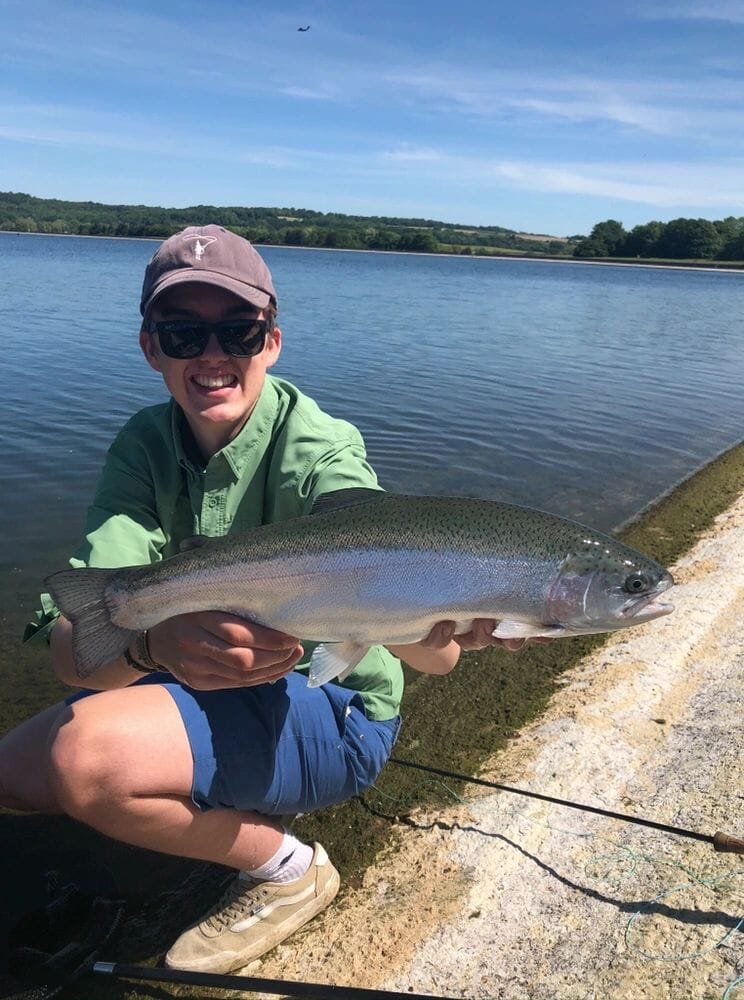
Less Is More! (Ben Beckwith Guest Blog)
Less is More: A concept often over-looked in the fishing world. I, like many, am often guilty of over-complicating a day’s fishing. The vast range of flies, lines, and gear on offer these days makes packing light quite a challenge. Now, for the competition anglers out there, it is important to have options to maximise one’s ability to adapt on the water and cover all bases. However, for pleasure days, I have found it much more enjoyable to just keep it simple.
My good friend Oscar Boatfield of Bear Fly Fishing introduced me to this more simplistic approach – taking the ‘Bear’ minimum. At first, I was sceptical. I had got quite accustomed to having all the extra bits and bobs in my fishing vest that without it all I felt somewhat naked! However, when I began to implement this approach, I found that my catch rates vastly improved. Armed with only a handful of my favourite flies I was no longer wasting time wading through several fly boxes, leading to less time selecting flies and more time catching fish.
After finding success with this approach on the rivers, I thought I would see how it faired on stillwaters and reservoirs. To do this I headed to one of the premier reservoirs in the country - Farmoor Reservoir in Oxfordshire. It may not be the most picturesque fishery, however, what it lacks in aesthetics, it certainly makes up for with the sensational fishing it has to offer.
During the national lockdown, I was itching to get out for a day’s fishing. So as soon as restrictions were lifted I swiftly booked a day at Farmoor. In eager anticipation for a day on the water, I kept a close eye on the reports from the fishery. One that stuck out was from Ben Worley at Upavon Fly Fishing. He had a tremendous trip, the day before I was due to visit. After a good conversation, the night before, I hit the tying desk and tied up some last-minute essentials.

Upon arriving at the fishery, the conditions were not ideal. Bright sunshine and light winds. The ‘usual spots’, being the top end of F2 where the old cages were and the first side of F2 adjacent to the main car park was already overrun. So, I decided to avoid these areas because they had been hit hard over the past few days. By fishing in a spot that had likely seen less pressure, I would theoretically be covering more obliging quarry.
Maintaining my simplistic initiative, I set up a 10ft 7w rod and with an Airflo 12ft Slow midge tip. One of the 3 lines I had with me. From this, I had a 3-fly cast, spaced 5ft apart. Two Diawl Bachs and an FNF FAB on the point. Most people believe that concrete bowls such as Farmoor are completely featureless! However, at certain distances from the bank, there are subsurface ledges or drop-offs that the fish often patrol along. Being able to effectively fish these can be the difference between a good day and a great day. I started by casting short, covering this first 'drop off'.
I prefer to fish nymphs completely static! Just keeping in touch with them, waiting for the line to go tight. On my first cast, my line went tight, and I was into my first fish of the day. After a spirited fight, a nice well-mended fish of about 2.5lb graced my net. This was the case for my next 5 casts, with all flies being taken. I generally judge a method by a rule of 3. One is a fluke, two is a coincidence and 3 is a method. However, 5 in as many casts was just silly!

My method continued to consistently catch until other anglers began to gather around me. The increased pressure pushed the fish out. The simple solution to this was just to cast out a little further to reach them. I employed the same tactic and flies, and my first long cast saw a double up on the nymphs and then another fish just after on the FAB. Certain patterns did stand out, but the presentation was key. The 12ft slow tip was putting 3-4 fish in my net in comparison to other 1's or 2's in the same time frame when they were using different lines.
When I had landed 20 fish in 2 hours I decided to stop for some lunch and then I proceeded to move further around the reservoir to find some new fish. The area around the old cages had seen a lot of pressure and it was showing! Very few rods were bending, with many anglers moving to different areas of the reservoir.

Because the fish had seen a lot of pressure I decided to fish smaller and lighter. My 10lb fluorocarbon changed down to 7lb and dropped my nymphs down to #12’s. As well as this, my FAB had to come off too. Where I had previously used quite bright patterns, I changed to more washed-out colours. Yet again, by only having one small box of flies, I minimised my time selecting patterns and my flies spent more time in the water! The change saw several more fish coming to the net. Again, employing the same method of casting out and just keeping in touch with my flies. Static was key! By 5:30 pm I had put over 30 fish in the net with a couple of BIG fish thrown in!
An awesome day and testament to the success of a simplified approach.
Tight Lines Ben.
Ben Beckwith is an up and coming young fly fisherman who continues to impress with his innovative, modern approach to fly fishing. He is an accomplished fly tyer, contact him via Facebook or email beckersb16@gmail.com for bespoke fly orders.
Leave a comment